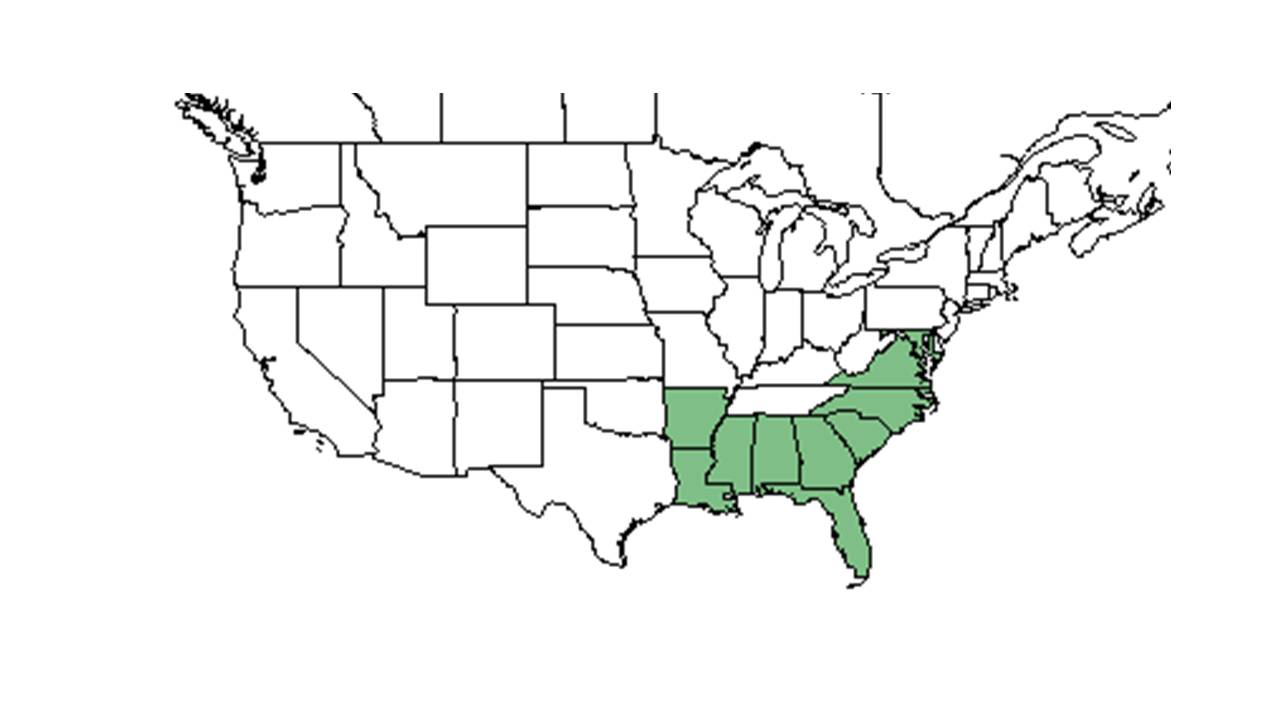Difference between revisions of "Crotalaria rotundifolia"
| Line 21: | Line 21: | ||
==Distribution== | ==Distribution== | ||
==Ecology== | ==Ecology== | ||
| + | It is a nitrogen-fixing legume.<ref>Runion, G. B., M. A. Davis, et al. (2006). "Effects of elevated atmospheric carbon dioxide on biomass and carbon accumulation in a model regenerating longleaf pine community." Journal of Environmental Quality 35: 1478-1486.</ref> In a study by Davis, it was discovered that C. rotundifolia had higher mortality and less biomass in high carbon dioxide plots, suggesting that not all species will perform well as global carbon dioxide levels rise.<ref name="Davis et al 2002"/> | ||
===Habitat=== <!--Natural communities, human disturbed habitats, topography, hydrology, soils, light, fire regime requirements for removal of competition, etc.--> | ===Habitat=== <!--Natural communities, human disturbed habitats, topography, hydrology, soils, light, fire regime requirements for removal of competition, etc.--> | ||
| + | It’s a common associate in longleaf pine savannas.<ref name="Davis et al 2002">Davis, M. A., S. G. Pritchard, et al. (2002). "Elevated atmospheric CO2 affects structure of a model regenerating longleaf pine community." Journal of Ecology 90: 130-140.</ref> It can also be found in sandhill communities.<ref name="Stamp and Lucas 1990"/> | ||
===Phenology=== <!--Timing off flowering, fruiting, seed dispersal, and environmental triggers. Cite PanFlora website if appropriate: http://www.gilnelson.com/PanFlora/ --> | ===Phenology=== <!--Timing off flowering, fruiting, seed dispersal, and environmental triggers. Cite PanFlora website if appropriate: http://www.gilnelson.com/PanFlora/ --> | ||
| + | It has a broad, bimodal flowering phenology with peaks in early April and late fall.<ref name="Hiers et al 2000">Hiers, J. K., R. Wyatt, et al. (2000). "The effects of fire regime on legume reproduction in longleaf pine savannas: is a season selective?" Oecologia 125: 521-530.</ref> Perennial herbaceous legume.<ref name="Davis et al 2002"/> | ||
===Seed dispersal=== | ===Seed dispersal=== | ||
| + | Seeds are forcefully expelled after the fruit matures and dries, and ants act as the main dispersal agents. The ballistic dispersal distance was found to be around .94 meters.<ref name="Stamp and Lucas 1990">Stamp, N. E. and J. R. Lucas (1990). "Spatial patterns and dispersal distances of explosively dispersing plants in Florida sandhill vegetation." Journal of Ecology 78: 589-600.</ref> | ||
===Seed bank and germination=== | ===Seed bank and germination=== | ||
===Fire ecology=== <!--Fire tolerance, fire dependence, adaptive fire responses--> | ===Fire ecology=== <!--Fire tolerance, fire dependence, adaptive fire responses--> | ||
| + | Its reproduction is robust to burn treatments and season of burn.<ref name="Hiers et al 2000"/> | ||
===Pollination=== | ===Pollination=== | ||
===Use by animals=== <!--Herbivory, granivory, insect hosting, etc.--> | ===Use by animals=== <!--Herbivory, granivory, insect hosting, etc.--> | ||
| + | Caterpillars are often found consuming C. rotundifolia. Ants, especially Pogonomyrmex badius, help disperse the seeds long distances.<ref name="Stamp and Lucas 1990"/> | ||
===Diseases and parasites=== | ===Diseases and parasites=== | ||
==Conservation and Management== | ==Conservation and Management== | ||
Revision as of 12:10, 10 June 2015
| Crotalaria rotundifolia | |
|---|---|

| |
| Scientific classification | |
| Kingdom: | Plantae |
| Division: | Magnoliophyta - Flowering plants |
| Class: | Magnoliopsida – Dicotyledons |
| Order: | Fabales |
| Family: | Fabaceae ⁄ Leguminosae |
| Genus: | Crotalaria |
| Species: | C. rotundifolia |
| Binomial name | |
| Crotalaria rotundifolia Walter ex J.F. Gmel. | |

| |
| Natural range of Crotalaria rotundifolia from USDA NRCS Plants Database. | |
Contents
Description
Distribution
Ecology
It is a nitrogen-fixing legume.[1] In a study by Davis, it was discovered that C. rotundifolia had higher mortality and less biomass in high carbon dioxide plots, suggesting that not all species will perform well as global carbon dioxide levels rise.[2]
Habitat
It’s a common associate in longleaf pine savannas.[2] It can also be found in sandhill communities.[3]
Phenology
It has a broad, bimodal flowering phenology with peaks in early April and late fall.[4] Perennial herbaceous legume.[2]
Seed dispersal
Seeds are forcefully expelled after the fruit matures and dries, and ants act as the main dispersal agents. The ballistic dispersal distance was found to be around .94 meters.[3]
Seed bank and germination
Fire ecology
Its reproduction is robust to burn treatments and season of burn.[4]
Pollination
Use by animals
Caterpillars are often found consuming C. rotundifolia. Ants, especially Pogonomyrmex badius, help disperse the seeds long distances.[3]
Diseases and parasites
Conservation and Management
Cultivation and restoration
References and notes
Photo Gallery
- ↑ Runion, G. B., M. A. Davis, et al. (2006). "Effects of elevated atmospheric carbon dioxide on biomass and carbon accumulation in a model regenerating longleaf pine community." Journal of Environmental Quality 35: 1478-1486.
- ↑ 2.0 2.1 2.2 Davis, M. A., S. G. Pritchard, et al. (2002). "Elevated atmospheric CO2 affects structure of a model regenerating longleaf pine community." Journal of Ecology 90: 130-140.
- ↑ 3.0 3.1 3.2 Stamp, N. E. and J. R. Lucas (1990). "Spatial patterns and dispersal distances of explosively dispersing plants in Florida sandhill vegetation." Journal of Ecology 78: 589-600.
- ↑ 4.0 4.1 Hiers, J. K., R. Wyatt, et al. (2000). "The effects of fire regime on legume reproduction in longleaf pine savannas: is a season selective?" Oecologia 125: 521-530.